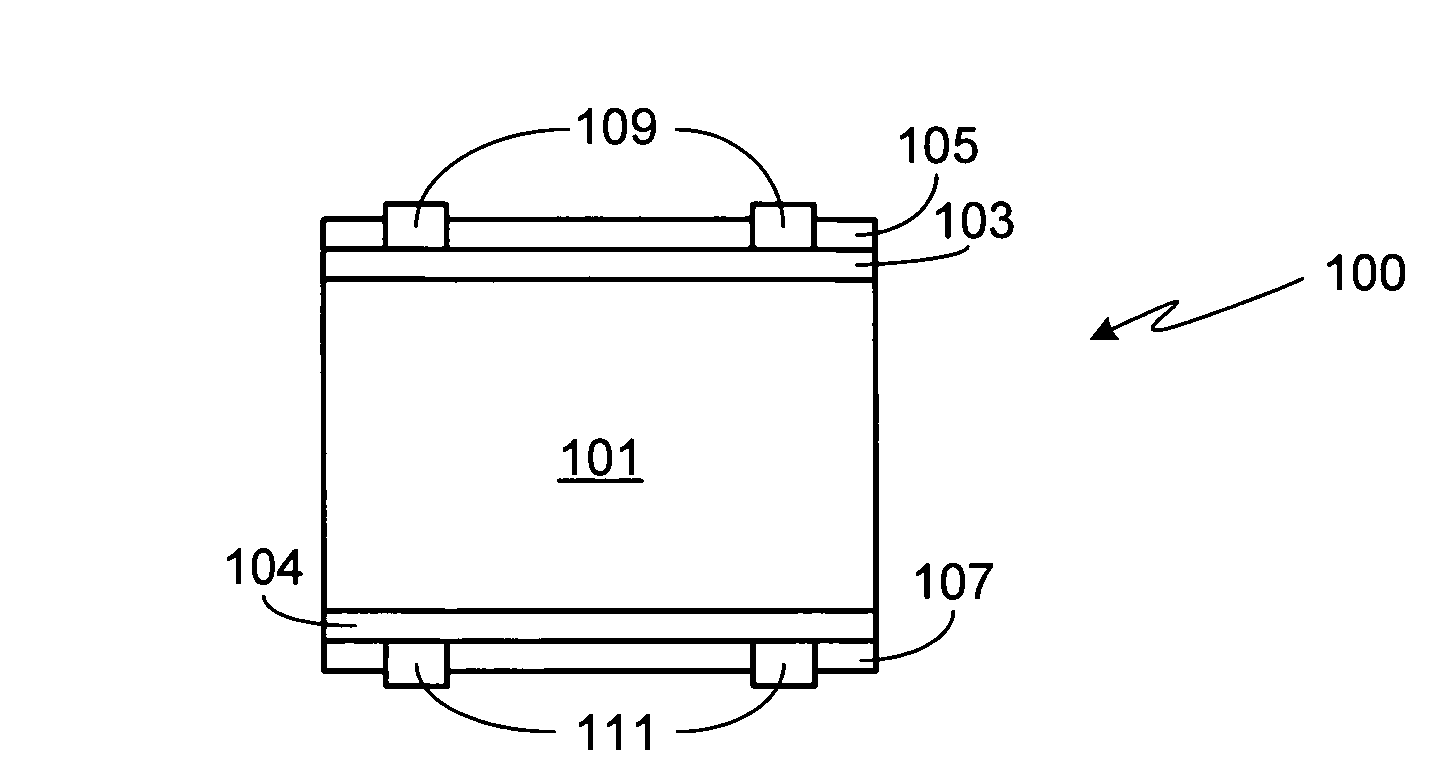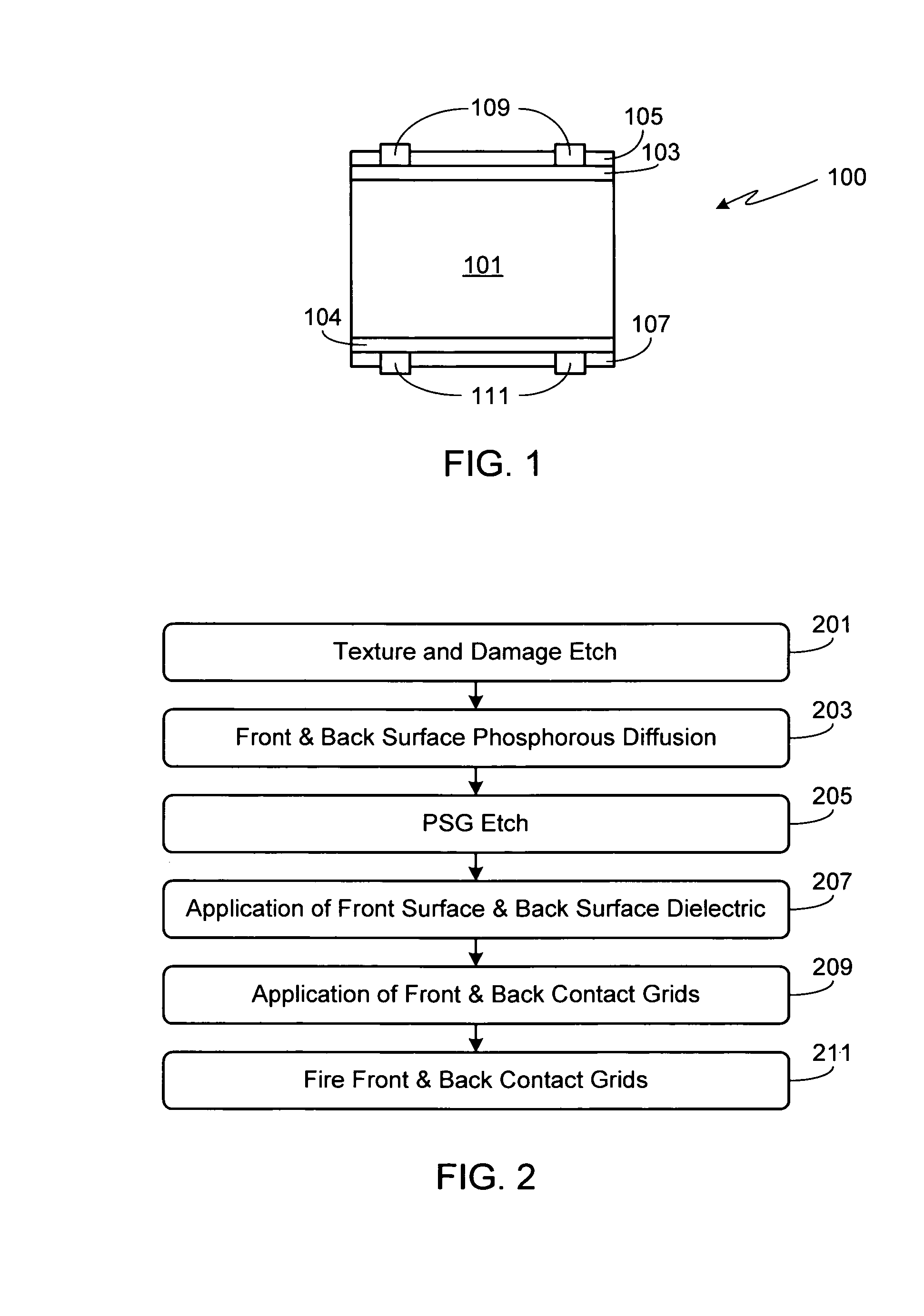Bifacial solar cells with overlaid back grid surface
a solar cell and back grid technology, applied in the field of solar cells, can solve the problems of relatively complex design and technology, and thus high cost, and achieve the effect of reducing manufacturing costs, and simplifying the manufacturing process
- Summary
- Abstract
- Description
- Claims
- Application Information
AI Technical Summary
Benefits of technology
Problems solved by technology
Method used
Image
Examples
Embodiment Construction
[0019]FIG. 1 illustrates a cross-sectional view of a preferred bifacial solar cell (BSC) structure fabricated in accordance with the procedure described in FIG. 2. Silicon substrate 101 may be of either p- or n-type. In the illustrated device and process of FIGS. 1 and 2, a p-type substrate is used.
[0020]Initially, substrate 101 is prepared using any of a variety of well-known substrate preparatory processes (step 201). In general, during step 201 saw and handling induced damage is removed via an etching process, for example using a nitric and hydrofluoric (HF) acid mixture. After substrate preparation, phosphorous is diffused onto the front surface of substrate 101, creating n+ layer 103 and a p-n junction at the interface of substrate 101 and n+ layer 103. During this step, phosphorous is also diffused onto the back surface of substrate 101, creating n+ layer 104 and a floating junction. Preferably n+ layer 103 is formed using phosphoryl chloride (POCl3) with a diffusion temperatu...
PUM
 Login to View More
Login to View More Abstract
Description
Claims
Application Information
 Login to View More
Login to View More - R&D
- Intellectual Property
- Life Sciences
- Materials
- Tech Scout
- Unparalleled Data Quality
- Higher Quality Content
- 60% Fewer Hallucinations
Browse by: Latest US Patents, China's latest patents, Technical Efficacy Thesaurus, Application Domain, Technology Topic, Popular Technical Reports.
© 2025 PatSnap. All rights reserved.Legal|Privacy policy|Modern Slavery Act Transparency Statement|Sitemap|About US| Contact US: help@patsnap.com



